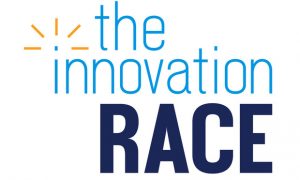Teamwork Pays Off for Aon, Outside Firms in Building More Efficient Legal Processes
Aon and its outside partners at Sidley Austin and Foley & Lardner teamed up to make a big difference through Lean/Six Sigma.
February 23, 2018 at 04:52 PM
5 minute read
 Cineberg/Shutterstock.com
Cineberg/Shutterstock.com As the chief operating officer of the law department at Aon Corp., Audrey Rubin is responsible for budget management, negotiation of outside legal fees and much more.
In 2015, she discovered a way to boost efficiency for her department in all those areas, leading to big savings and stronger relationships. It's a process she's continuing to build in-house.
It all started for Rubin when she agreed to attend a Legal Lean Sigma Institute training, which focused on process improvement and project management in the law. Catherine Alman MacDonagh, the institute's co-founder, met Rubin years before and over time convinced her the training would be useful.
 After the session, Rubin told MacDonagh that she'd learned good lessons, and wanted to find a way to apply them to address some of the issues facing her own legal department. The challenge was, her in-house colleagues at Aon and the company's outside firms didn't know the Legal Lean Sigma concepts.
After the session, Rubin told MacDonagh that she'd learned good lessons, and wanted to find a way to apply them to address some of the issues facing her own legal department. The challenge was, her in-house colleagues at Aon and the company's outside firms didn't know the Legal Lean Sigma concepts.
To fill this knowledge gap and simultaneously create new efficiencies at Aon, Rubin and MacDonagh began preparing a pilot training for members of Aon's legal department and their preferred law firms.
“Rather than get trained in a hypothetical vacuum, we're training together and then starting to solve our problems as part of the training,” Rubin said.
Rubin noted some recurring problems springing up in Aon's relationships with the outside firms, and asked her colleagues about issues they'd noticed. Some of the most prominent issues were lags and miscommunication in billing and subpoena processes.
Then, she and MacDonagh converted Legal Lean Sigma's hypothetical training scenario issues into the real ones Aon faced with its firms. This way, they'd have a chance to use process improvement and in-person communication to make a change.
They started with two firms, Sidley Austin and Foley & Lardner, each of which got their own training session with Aon.
“Aon approached the relationship partners here at Sidley, explained why they were interested in this model and how it might be beneficial for these partnerships Aon had,” said Ami Wynne, a partner at Sidley who was involved in the training. Wynne says her team had never done anything like this before and went in with an open mind.
On the training days—one with Sidley, one with Foley & Lardner—Aon legal team members broke into groups with people from the respective firms.
The groups were divided into “stakeholders,” or those involved in a process on either end. One set of stakeholders, for instance, consisted of law firm attorneys who bill time, law department attorneys who review time, and billing personnel working to cut down the number of rejected invoices. In some cases, Aon staff were talking to firm employees who they'd emailed, but never met in person.
The groups spent the day learning process management and discussing how those skills could be applied to make billings, M&A transactions, and subpoena and contract processes more efficient. Rubin says the teams were able to then see which steps in each of these processes were unnecessary and cut them out.
Meeting and speaking in-person, group members were able to figure out each individual's role in the process, eliminating the need for multiple forwarded emails or bounce-backs and reducing errors, according to Rubin. Processes were streamlined as participants set clear steps and lines of communication—for example, Aon decided to use collaborative platforms for processing subpoenas rather than bounce the documents around. She said the lessons continued even after the training day was over.
“Each team has to assign itself a leader to keep it moving, so there is homework, but then we come back together for a half a day,” Rubin said. “We report out what we've been able to accomplish in terms of the process improvements and then we set up a monthly report.”
After the half-day meeting, Rubin says the teams continue to touch base by phone with a monthly report that allows the groups to spot issues and improve, until the process improvement strategies become ingrained.
And the hard work has paid off for Aon. According to Rubin, the Lean/Six Sigma Process Design decreased the total dollar amount of rejected invoices for legal work by 41 percent and decreased the average subpoena cycle time by 44 percent from 175 days in 2014 to 98 days in 2015. She says aside from just increasing efficiencies, the changes have led to fewer errors.
The project has also strengthened Aon's relationship with the firms, Rubin and Wynne say.
“Even though Aon is a client we know very well and have very strong relationship with, there are always areas we can work together to enhance,” Wynne said.
The lessons learned in the training days and follow ups have extended outside Aon's relationship with the two originally selected firms. Rubin says her department has plans to go through the same training with other outside firms to address specific issues. She's also had legal staff approach her since the training with new, innovative ideas to improve process management at Aon.
This content has been archived. It is available through our partners, LexisNexis® and Bloomberg Law.
To view this content, please continue to their sites.
Not a Lexis Subscriber?
Subscribe Now
Not a Bloomberg Law Subscriber?
Subscribe Now
NOT FOR REPRINT
© 2025 ALM Global, LLC, All Rights Reserved. Request academic re-use from www.copyright.com. All other uses, submit a request to [email protected]. For more information visit Asset & Logo Licensing.
You Might Like
View All
MLB's Texas Rangers Search for a New GC and a Broadcasting Deal

Survey Finds Majority of Legal Professionals Still Intimidated by AI Despite Need to Streamline Mounting Caseloads

Kraken’s Chief Legal Officer Exits, Eyes Role in Trump Administration
3 minute read
FTC Chair Lina Khan Sues John Deere Over 'Right to Repair,' Infuriates Successor
6 minute readTrending Stories
- 1'A Death Sentence for TikTok'?: Litigators and Experts Weigh Impact of Potential Ban on Creators and Data Privacy
- 2Bribery Case Against Former Lt. Gov. Brian Benjamin Is Dropped
- 3‘Extremely Disturbing’: AI Firms Face Class Action by ‘Taskers’ Exposed to Traumatic Content
- 4State Appeals Court Revives BraunHagey Lawsuit Alleging $4.2M Unlawful Wire to China
- 5Invoking Trump, AG Bonta Reminds Lawyers of Duties to Noncitizens in Plea Dealing
Who Got The Work
J. Brugh Lower of Gibbons has entered an appearance for industrial equipment supplier Devco Corporation in a pending trademark infringement lawsuit. The suit, accusing the defendant of selling knock-off Graco products, was filed Dec. 18 in New Jersey District Court by Rivkin Radler on behalf of Graco Inc. and Graco Minnesota. The case, assigned to U.S. District Judge Zahid N. Quraishi, is 3:24-cv-11294, Graco Inc. et al v. Devco Corporation.
Who Got The Work
Rebecca Maller-Stein and Kent A. Yalowitz of Arnold & Porter Kaye Scholer have entered their appearances for Hanaco Venture Capital and its executives, Lior Prosor and David Frankel, in a pending securities lawsuit. The action, filed on Dec. 24 in New York Southern District Court by Zell, Aron & Co. on behalf of Goldeneye Advisors, accuses the defendants of negligently and fraudulently managing the plaintiff's $1 million investment. The case, assigned to U.S. District Judge Vernon S. Broderick, is 1:24-cv-09918, Goldeneye Advisors, LLC v. Hanaco Venture Capital, Ltd. et al.
Who Got The Work
Attorneys from A&O Shearman has stepped in as defense counsel for Toronto-Dominion Bank and other defendants in a pending securities class action. The suit, filed Dec. 11 in New York Southern District Court by Bleichmar Fonti & Auld, accuses the defendants of concealing the bank's 'pervasive' deficiencies in regards to its compliance with the Bank Secrecy Act and the quality of its anti-money laundering controls. The case, assigned to U.S. District Judge Arun Subramanian, is 1:24-cv-09445, Gonzalez v. The Toronto-Dominion Bank et al.
Who Got The Work
Crown Castle International, a Pennsylvania company providing shared communications infrastructure, has turned to Luke D. Wolf of Gordon Rees Scully Mansukhani to fend off a pending breach-of-contract lawsuit. The court action, filed Nov. 25 in Michigan Eastern District Court by Hooper Hathaway PC on behalf of The Town Residences LLC, accuses Crown Castle of failing to transfer approximately $30,000 in utility payments from T-Mobile in breach of a roof-top lease and assignment agreement. The case, assigned to U.S. District Judge Susan K. Declercq, is 2:24-cv-13131, The Town Residences LLC v. T-Mobile US, Inc. et al.
Who Got The Work
Wilfred P. Coronato and Daniel M. Schwartz of McCarter & English have stepped in as defense counsel to Electrolux Home Products Inc. in a pending product liability lawsuit. The court action, filed Nov. 26 in New York Eastern District Court by Poulos Lopiccolo PC and Nagel Rice LLP on behalf of David Stern, alleges that the defendant's refrigerators’ drawers and shelving repeatedly break and fall apart within months after purchase. The case, assigned to U.S. District Judge Joan M. Azrack, is 2:24-cv-08204, Stern v. Electrolux Home Products, Inc.
Featured Firms
Law Offices of Gary Martin Hays & Associates, P.C.
(470) 294-1674
Law Offices of Mark E. Salomone
(857) 444-6468
Smith & Hassler
(713) 739-1250






